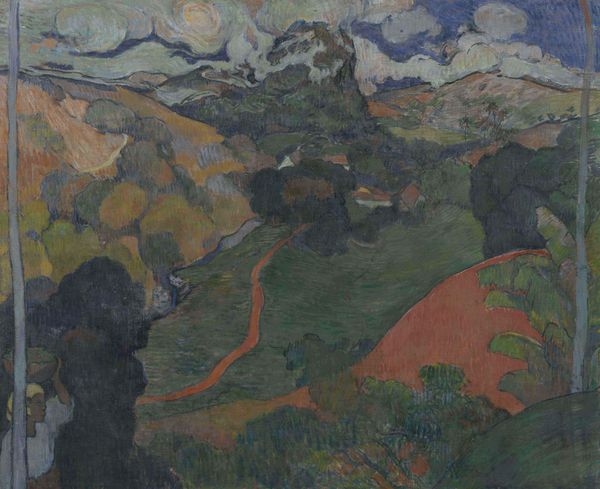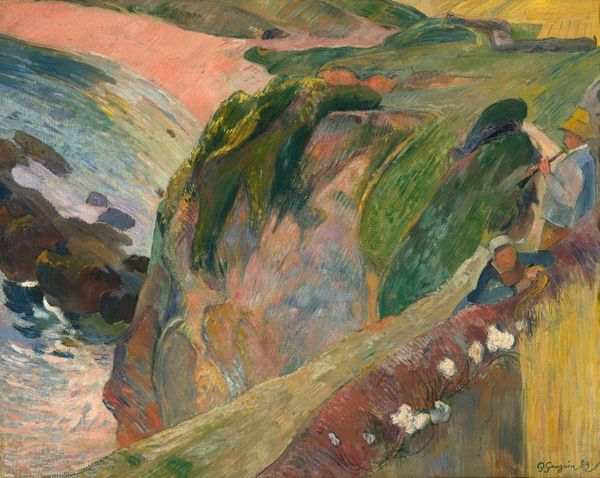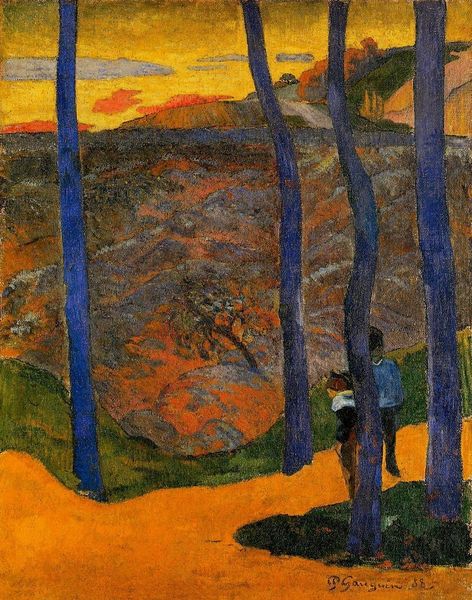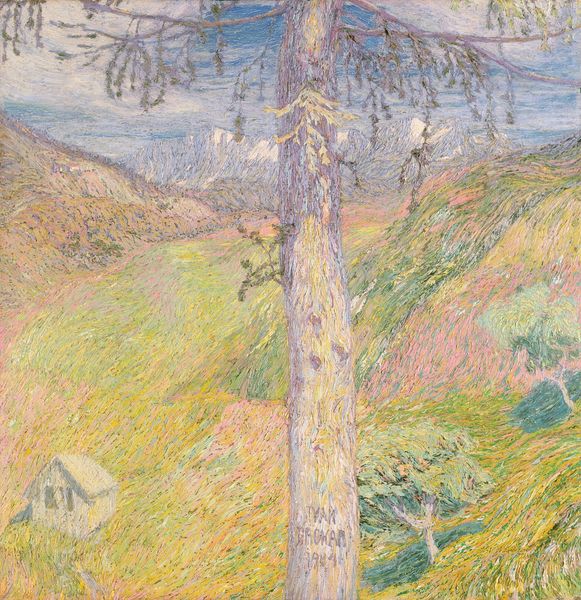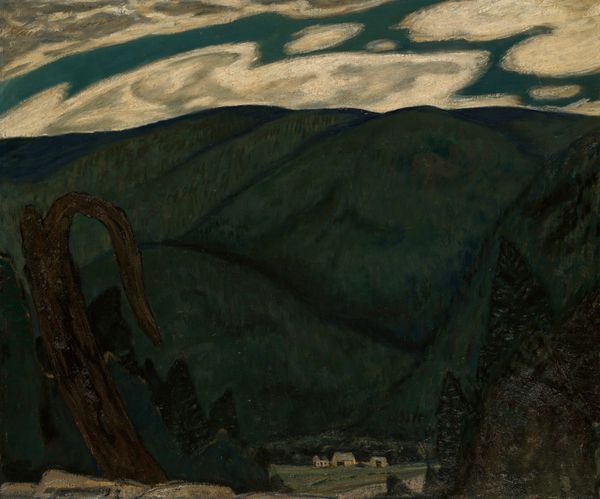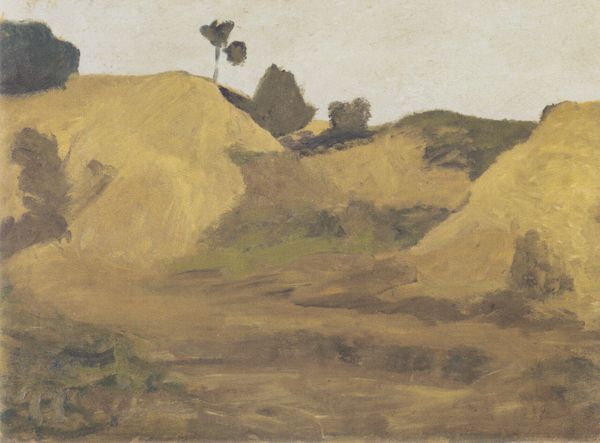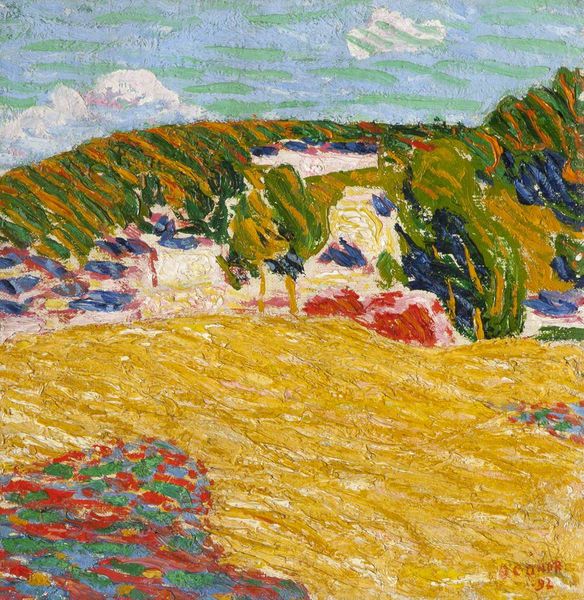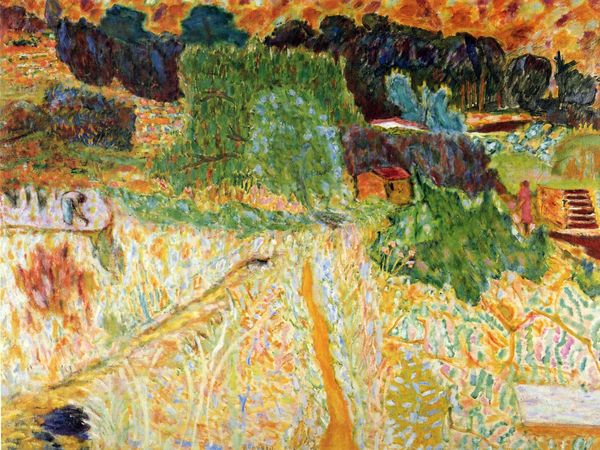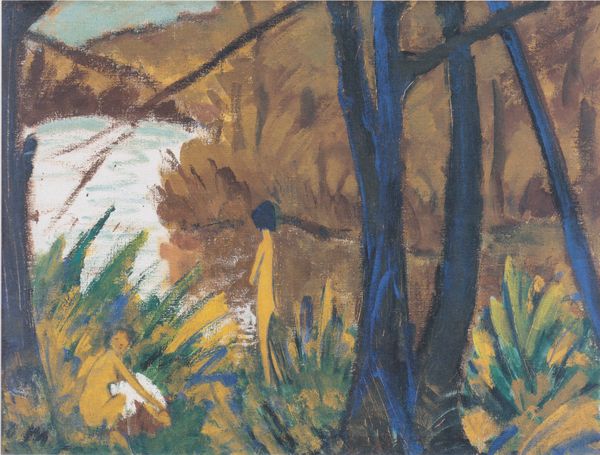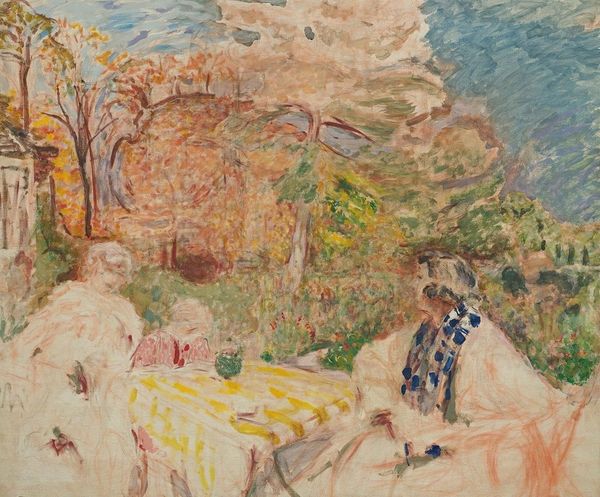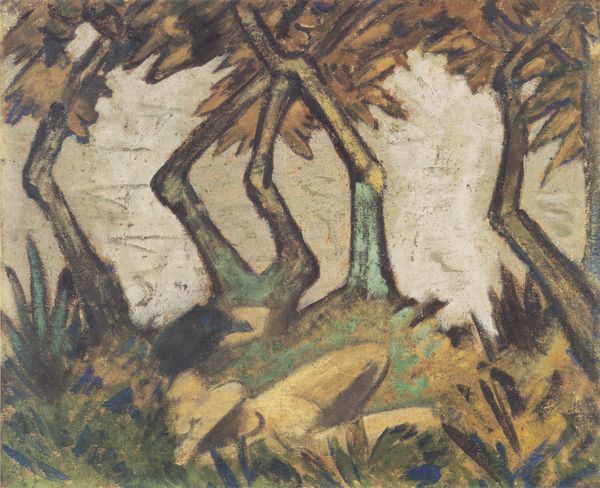
painting, plein-air, oil-paint, canvas, impasto
#
portrait
#
painting
#
plein-air
#
oil-paint
#
landscape
#
figuration
#
oil painting
#
canvas
#
impasto
#
post-impressionism
Dimensions: 39.4 cm (height) x 46 cm (width) (Netto), 58.1 cm (height) x 65.3 cm (width) x 7.1 cm (depth) (Brutto)
Curator: G.F. Clement painted this “Breton Landscape” in 1892. It is rendered in oil paint on canvas, and exemplifies a Post-Impressionist plein-air approach. Editor: It has this lovely sense of quietude and a rather abstracted presentation of space, yet also hints at underlying labor... it almost seems unfinished to me. Curator: It certainly challenges conventional landscape portrayals. Clement’s vantage point—the viewer overlooking the seated woman, the fields, and body of water—foregrounds a social context as much as the physical land itself. I can’t help but see the peasant woman as embodying the toils and traditions tied to this landscape, perhaps even its exploitation. Editor: Precisely! It makes you consider how Clement rendered labor visually through those thickly applied strokes and textured fields—each daub, each furrow hinting at human touch and the production inherent in the landscape itself. One almost feels the physical effort embedded in each mark, connecting the labour on the land, with labour required to paint the image of it. Curator: And the muted palette—earthy browns, greens, and blues—speaks volumes about the lives lived in this place. It’s far from romanticized; there’s a rawness that resonates with the historical realities of rural labor and societal hierarchies in late 19th-century Brittany. I would even say, by showing us the worker with her back to us, the image calls us to reflect on issues of representation and who traditionally controls that narrative of labour, art, and land ownership. Editor: Right—the way he loaded the paint evokes the physicality of interacting with the earth; the very act of painting mirrors the processes shaping the Breton land and peasant experience. One can almost trace a history of labour simply through the artwork's tactile surface. Curator: Ultimately, I see a critical commentary subtly woven into what appears a placid landscape, questioning established social narratives. Editor: Yes. The means and modes by which we represent social classes is what is laid bare, not just an image, but a way of understanding means of artistic and social production. It’s an important statement about making visible those hidden facets of labor and material engagement in art.
Comments
No comments
Be the first to comment and join the conversation on the ultimate creative platform.
